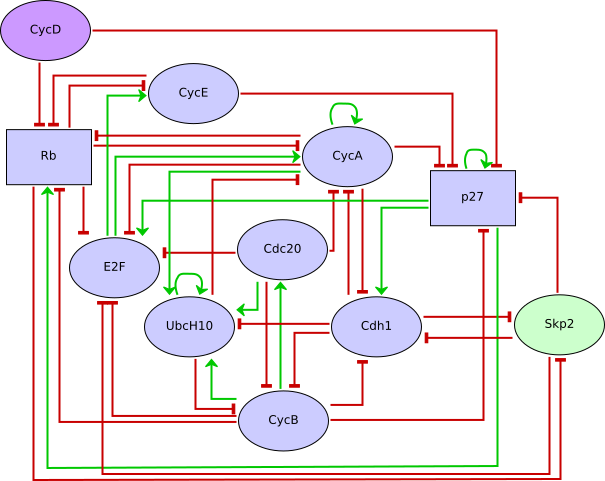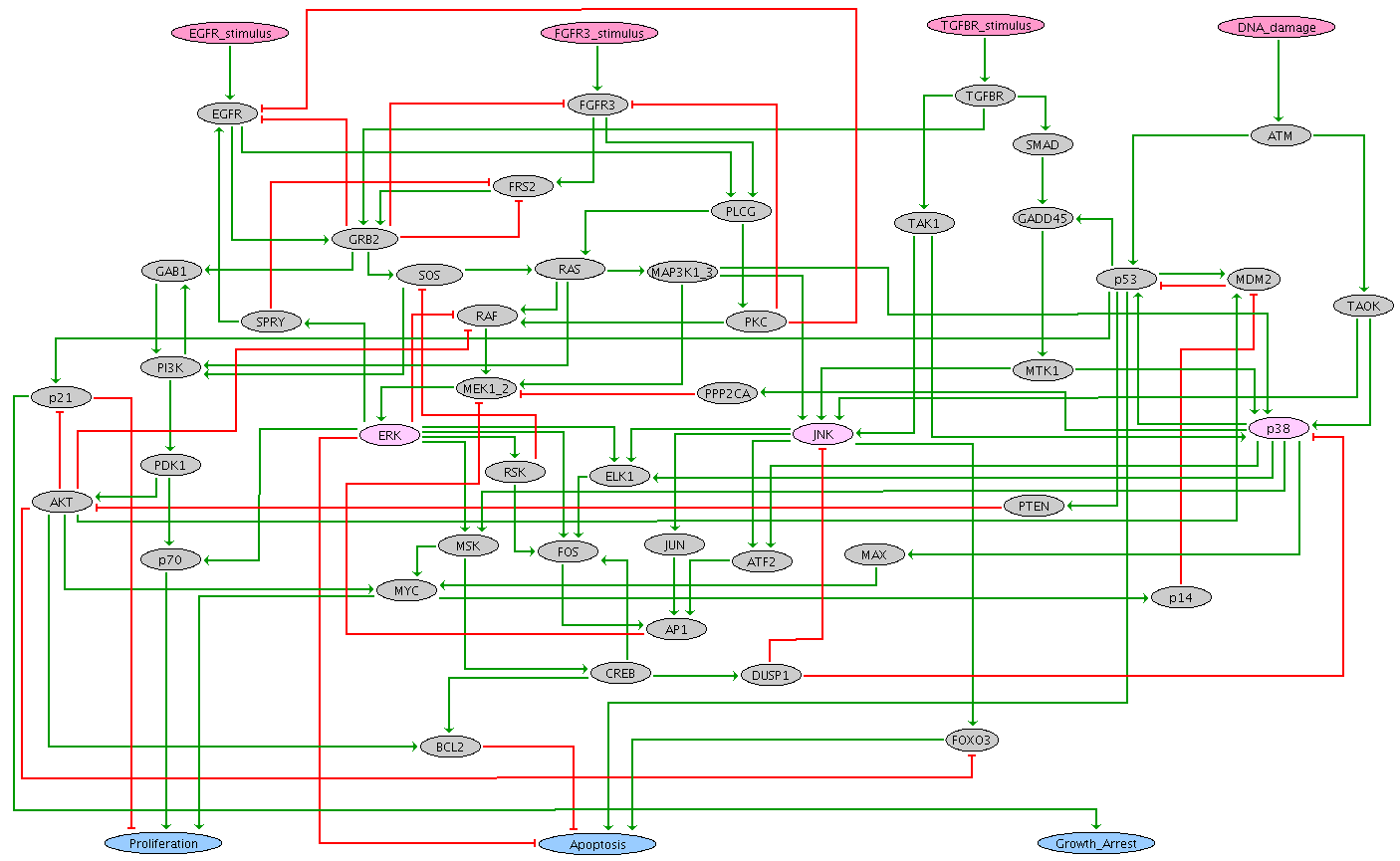Lineage fate decisions of hematopoietic cells depend on intrinsic factors and extrinsic signals provided by the bone marrow microenvironment, where they reside. Abnormalities in composition and function of hematopoietic niches have been proposed as key contributors of acute lymphoblastic leukemia(ALL) progression. Our previous experimental findings strongly suggest that pro-inflammatory cues contribute to mesenchymal niche abnormalities that result in maintenance of ALL precursor cells at the expense of normal hematopoiesis. Here, we propose a molecular regulatory network interconnecting the major communication pathways between hematopoietic stem and progenitor cells (HSPCs) and mesenchymal stromal cells (MSCs) within the bone marrow. Dynamical analysis of the network as a Boolean model reveals two stationary states that can be interpreted as the intercellular contact status.
Furthermore, simulations describe the molecular patterns observed during experimental proliferation and activation. Importantly, our model predicts instability in the CXCR4/CXCL12 and VLA4/VCAM1 interactions following microenvironmental perturbation due by temporal signaling from Toll like receptors (TLRs) ligation. Therefore, aberrant expression of NF-κB induced by intrinsic or extrinsic factors may contribute to create a tumor microenvironment where a negative feedback loop inhibiting CXCR4/CXCL12 and VLA4/VCAM1 cellular communication axes allows for the maintenance of malignant cells.

